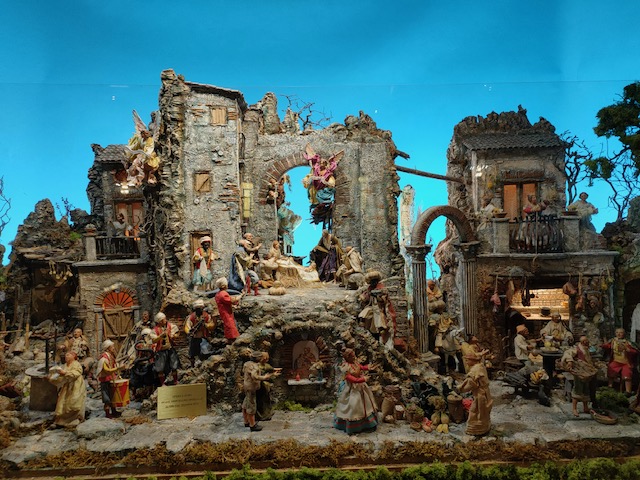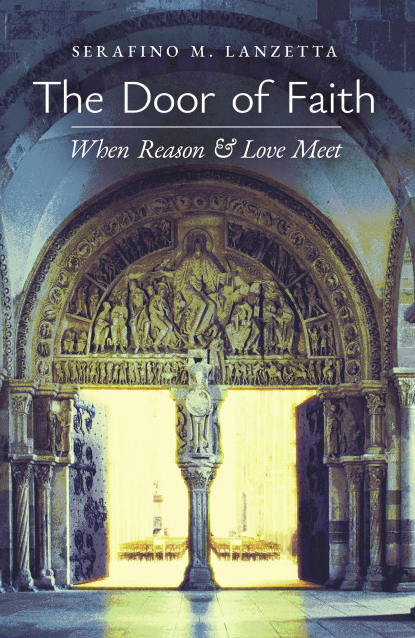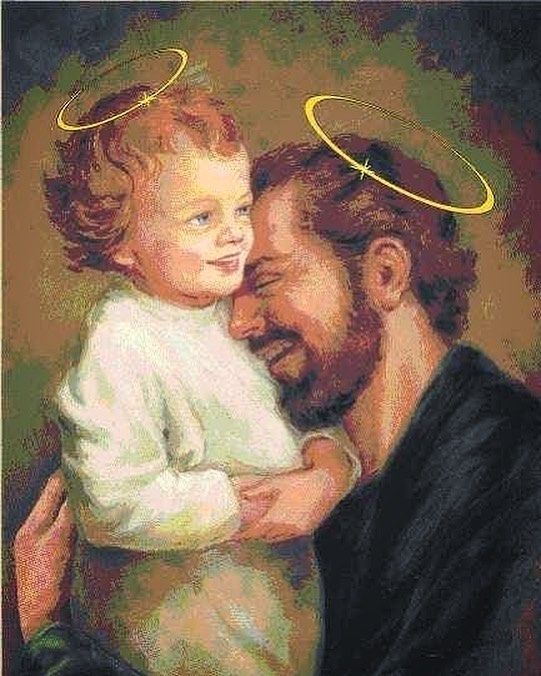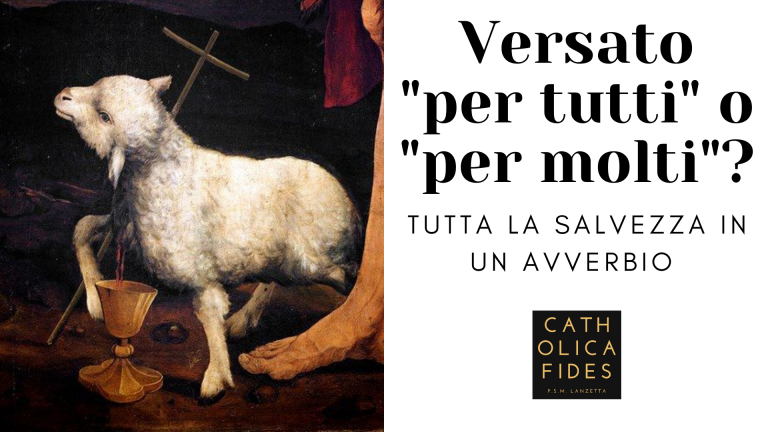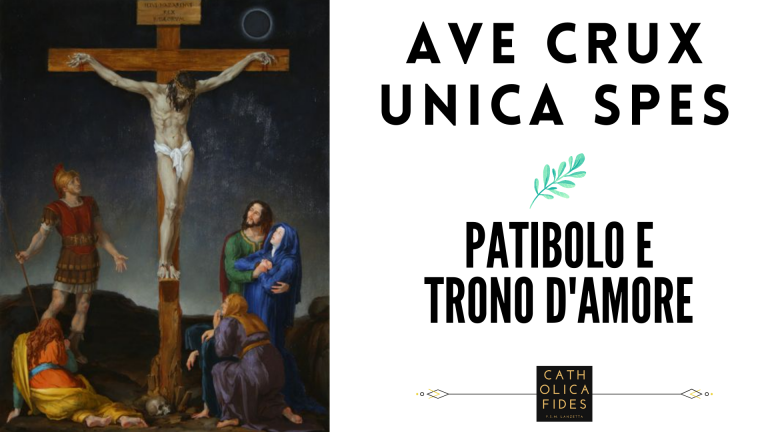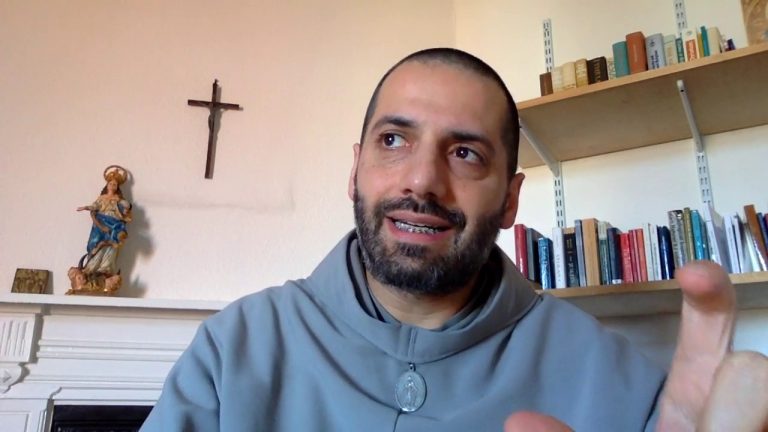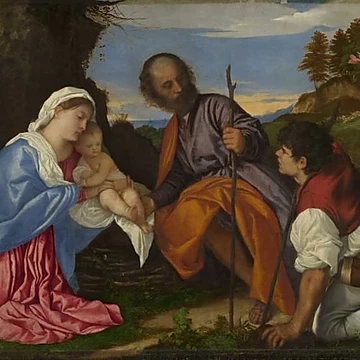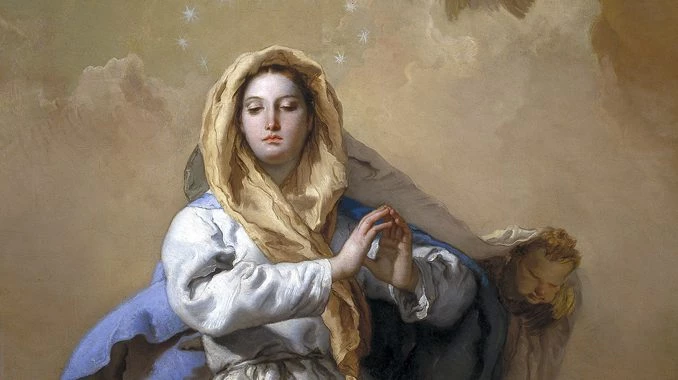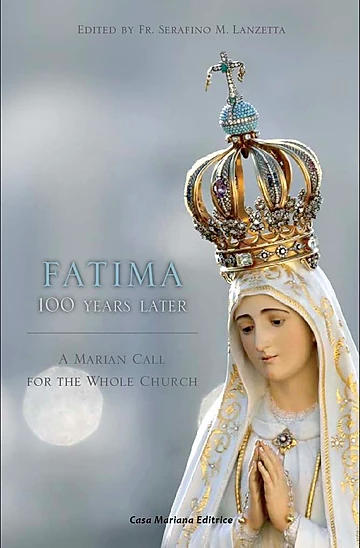By Fr Serafino M. Lanzetta
The testimonies of tradition
From the Gospels we have a few historical data about Jesus’ birth, necessary and indeed sufficient to hold firmly to the mystery. From St Matthew and St Luke, we learn that Jesus was born in Bethlehem of Juda (cf. Mt 2:1; Lk 2:4). From St Luke we learn only that there was no room “at the inn”, and that for this reason, the child was wrapped in swaddling clothes and laid in a manger (cf. Lk 2:4-7). The traditional view holds that Jesus was born in a cave. The only literal biblical reference to this is the fact that Our Lord was laid in a “manger” (cf. Lk 2:7: phátne). However, there are historical witnesses among the early Church Fathers who attest to Jesus’ being born in a cave: St Justin Martyr (150 A.D.), according to whom Jesus was born in a cave that was used as a stable, though not the typical stone and wooden stable so commonplace in our Christian art; then there is Origen (250 A.D.), followed by St Jerome (325 A.D.). In 335 A.D, Emperor Constantine built the Basilica of the Nativity on the spot where the cave of Jesus’ nativity had been identified in Bethlehem, thanks to the historical testimonies of these early Church Fathers.
Let’s now consider the following hypothesis: if the very grotto of Jesus’ birth in Bethlehem, upon which the Basilica of the Nativity was built, should no longer be considered the birthplace of Our Lord, in light of a new exegetical interpretation, could this new position simply call into question the now centuries-old belief in the historical authenticity of such an ancient site? Indeed, the site of the grotto had ironically been preserved by the emperor Adrian in his attempt to desecrate the Jewish and Christian holy places in Palestine shortly after 130. The crux of the matter, upon which the whole affair would appear to be hanging, is a different translation of one single word. Is this sufficient grounds for dismissing the traditional belief?
No room in the guest room?
Why do I suppose that this question hinges upon one single word? In recent decades, starting especially with the studies of Kenneth Bailey (1930-2016, Presbyterian minister, prolific author, and lecturer in Middle Eastern New Testament studies), in particular his work entitled Jesus Through Middle Eastern Eyes. Cultural Studies in the Gospel (2008), this classical view has been called into question and a new theory has been favoured: Jesus would have been born in an ordinary house. Bailey follows the interpretation of Alfred Plummer (1841-1926, Church of England clergyman and Biblical Scholar), in Gospel According to St Luke, 5th ed., International Critical Commentary (1922). There are several arguments supporting this theory. First, there is the fact that it would have been nearly impossible for Joseph, being of the house of David and finding himself in Bethlehem, his own city, not to find a place where his wife could give birth. It would have been unthinkable to imagine him knocking at any door, reciting his royal genealogy, and not being welcomed for the night. This apparent incongruity leads to a second and more important exegetical argument. The word used by Luke to indicate the inn, in which there was no room for the Holy Family, is katáluma (from katá lúo), meaning to unloose or untie, that is, to unsaddle one’s horses and untie one’s pack, which can mean a lodging place for men and cattle. In fact, there are authors, such as Joseph Fitzmeyer SJ, in The Gospel according to Luke I-IX (1970), who translate katáluma with “lodge”, a sort of caravansary or khan. For Raymond E. Brown, in The Birth of the Messiah (1977), Luke seems more interested in telling his audience where Mary laid the new-born baby. The fact that the details about the swaddling clothes and the manger are repeated three times (Lk 2:7.12.16) must be of significance, setting this unique scene against the lack of space at the various lodgings. The mention of the lodgings is of minor importance. It is not the focus, although for Brown, who reduces the text to a mere historical-critical analysis, “if the manger was pre-Lucan in the tradition, the lack of place in the lodgings may have been Luke’s vague surmise, in order to explain the use of the manger.”[1] What if it was instead the historical account of what truly happened? Why exclude it a priori? There is a very manifest attempt to explain the birth of Our Lord with its various suggestive details as a Midrash (interpreting or commenting on a word or an event in the Old Testament as reproduced in the New, by considering it to be a theological interpretation of the evangelist, with no historical foundation). And yet, one should recall that the birth of Our Lord, as related in the Gospels, is unique in its own genre. What Scott Hahn and Curtis Mitch say of Matthew’s Gospel can also be applied to Luke’s:
Unlike midrash, the evangelist’s story of Jesus is not founded on an Old Testament text. Whereas midrash seeks to mine deeper meanings of the Old Testament, Matthew does not seek to interpret the Old Testament for its own sake. More to the point, Matthew is not retelling Old Testament episodes but is telling an entirely new story! It is a story with new characters and events; it is a story that could stand on its own apart from his Old Testament citations. Matthew employs the Old Testament to illuminate the significance of Jesus’ birth, not to determine in advance its plot and outcome.[2]
It is true, however, that when Luke does mention a proper ‘inn’, in the parable of the man who fell among thieves (Luke 10.34), he uses the more general term pandocheîon, meaning a commercial inn, where travellers and guests were typically welcomed. Katáluma, more specifically, is the word for the private ‘upper’ room where Jesus and the disciples ate the ‘last supper’ (Mark 14:14 and Luke 22:11; Matthew does not mention the room). This is clearly a reception/guest room in a private home. The reading of katáluma as guest room is here preferred for the fact that in the Gospel of Luke two elements – already encountered – are placed one against the other: phátne and katáluma, designating the latter as a space in various types of structures. Hence, the conclusion is that it is likely that Mary and Joseph were hosted in the family living room, where there was also enough room for the animals, with a feeding trough, either carved in the floor or built as a free-standing element, since there was no available guest room. Mary then would give birth to Jesus in a crowded house, in the midst of guests and family members, despite the fact that only women were allowed to be present at the moment of childbirth. The shepherds would arrive and find such a festive atmosphere that they could announce the good news to all the people there gathered. Bailey concludes his analyses thusly:
Our Christmas crèche sets remain as they are because “ox and ass before him bow, / for he is in the manger now”. But the manger was in a warm and friendly home, not in a cold and lonely stable. Looking at the story in this light strips away layers of interpretative mythology that have built up around it. Jesus was born in a simple two-room village home such as the Middle East has known for at least three thousand years. Yes, we must rewrite our Christmas plays, but in rewriting them, the story is enriched, not cheapened.[3]
Some tenets of faith easily overlooked
In truth, by following this apparently convincing theory, aiming above all at comforting Jesus and the Holy Spouses by delivering them from such a cold scenario of isolation as depicted by Tradition, one risks – though in a veiled manner – calling into question some basic truths of the faith. This should be of import to all Christians.[4] First, what would constitute the “sign” of the miraculous birth of the Messiah, true God and true Man, if the environment was that of a normal family home, where the joyful and festive atmosphere would have been caused by the gathering of relatives more than the birth of the Messiah? Would Jesus have been the protagonist in that crowded house?
The sign was a “baby wrapped in swaddling clothes and laid in a manger” (cf. Lk 2: 11). If Jesus had been laid in a manger inside a house, this would rather have represented a normal place where animals were fed, and would not have pointed to anything special, beyond its immediate, tangible, meaning. But what is more extraordinary is the fact that when the shepherds arrived, they did not find a crowd, but simply those who are the protagonists of the mystery of Christmas. “They came with haste,” the Gospel notes, “and they found Mary and Joseph, and the infant lying in the manger” (Lk 2: 16). There was indeed silence and solitude, as is conducive to the mystery.
Moreover, if the shepherds, in order to adore the child, had come upon a family environment, in the middle of the city of Bethlehem, would they have been welcomed, since their social status, due to their unclean profession, excluded them from civic life? Unless we are tempted to deny the historicity of the shepherds coming to the manger, we should also remember that these humble and rejected people were inscribed on a list of those ineligible to be judges or witnesses since they grazed their flocks on other people’s land. Besides being held as unclean, they were also labelled as dishonest. How can one reconcile, therefore, their social exclusion, with the probability of their being welcomed into a private home? Their evangelising activity, telling everyone about the baby, leaving the people who heard their message in a state of wonder (cf. Lk 2:17-18), begins only after the encounter with Christ and by the effective means of his grace. They arrived, the Gospel recounts, saw the sign as foretold them by the Angel, and understood the word spoken to them concerning the child (cf. Lk 2:17). Would they have seen and immediately understood if that living room had been occupied by a large crowd? What would have been so special about the encounter, moreover, if all the people to whom the shepherds announced the great tidings had been in the house where Mary and Joseph were? Would there have been a need to evangelize those relatives and guests, if they were already aware of the presence of the Holy Family?
The focus is on the sign of the manger, thanks to which the environment, somehow, also shares in being a sign of the uniqueness of the new-born Messiah. The singularity of that birth had to be grasped by extraordinary exterior elements, leading to an interior reality, easily understandable by those simple people. They, indeed, came straight to the following conclusion: this child is Christ the Saviour. We may well suppose that the shepherds were the first to be called, for the fact that they, in some way, experienced the same condition as the new-born Messiah, that of the anawim, to which Mary and Joseph belonged. But they were also the only people to remain awake at night, keeping watch over their flocks. They were vigilant in the night of that world, and ready, in their humility, for God’s coming. Once they had arrived at the place of the Messiah’s birth, at their first glance, these humble shepherds believed in the word of the angel because they found everything according to description. With simplicity and trust, they welcomed the word of the angel and set out on their journey of faith towards the new-born Saviour. The Gospel says: “seeing, they understood of the word that had been spoken to them concerning this child” (Lk 2:17). The word spoken to them meant the sign, and the sign now points back to the word and reassures them. Word and sign are one in the flesh assumed by the Logos at his incarnation, and express the sacramental unity of the invisible and visible reality, in the sacrament par excellence: the Word incarnate.
But what is even more important to ponder is the fact that if Our Lady had given birth in a normal house, with people around and women assisting her, the logical conclusion would have been that the childbirth was not virginal. An ordinary familial context evokes immediately an ordinary childbirth. An external condition appropriate to the virginal childbirth was needed so that it might be wrapped up by silence, privacy and the intimacy between the Mother and the Son. Even Joseph’s presence is not required in that solemn moment. The virginity in partu of the Mother is a miraculous, extraordinary birth of the Son, of the One who comes through the womb of the Blessed Virgin without touching it, with neither rupture nor birth pangs. That moment preludes Jesus’ resurrection, when his glorious body came through the linen cloths, leaving them lying as they had enveloped his body, which was truly astonishing for John and Peter. John saw this sign and believed in the resurrection (cf. Jn 20:4-8); it also preludes Our Lord’s entering the upper room, again after his resurrection, passing through a closed door (cf. Jn 20:19). The way Jesus came into the world is reflected in these solemn later moments of his life, with the experience of silence and seclusion from profane eyes. The mystery is sacred, necessarily set apart from profanity, otherwise it is easily denied. The birth in a normal home environment, in spite of a traditional and constant belief, conveys the idea of a “normal” moment in the life of Joseph and Mary, where, in fact, the mystery is obscured by the noise and profanity of life. Furthermore, the theory of a “living room” as Jesus’ birthplace seems to favour the idea of a joyful Christmas, where no isolation and sadness were experienced by the Infant Jesus, immersed rather in a festal atmosphere. And yet it seems to spoil, in addition to the very tenants of the faith, the very meaning of joy.
Joy is brought about by the nativity of Christ, by the fact of his birth and not by the external situation of a warm familial environment. It is the virginal childbirth of Mary, painless, joyful, and peaceful, that cried out an immense joy to be announced to the world. The shepherds were the first to become messengers of this joy because they experienced it: a joy beyond human expectation. Now, all those who heard the humble shepherds speak of the child wondered at the good tidings they were spreading all around: Christ the Lord was born. And Mary, the Mother of Jesus, the one who was fully aware of the virginal mystery of the Incarnation and Birth of the Emmanuel, “kept all these words, pondering them in her heart” (Lk 2:19). Mary keeps the words of the shepherds, their faith in the mystery of God’s incarnation as echoing the word of the celestial messenger. Her Immaculate Heart is the holy place where all the mysteries of faith, as well as the wonder and awe of the first believers, are kept secure. One last argument to refute the hypothesis of a living room as Jesus’ birthplace is offered precisely in this: Mary’s interior and highly spiritual attitude, inciting her to meditate and ponder on those words, points rather to an atmosphere of recollection, silence and solitude. Only Mary was with the child at the very moment of his coming into this world, and the child was with Mary. Mother and Son, Son and Mother, are one and remain in that virginal oneness.
The Child with Mary his Mother
To be convinced of this virginal unity between the Child and his Mother, necessarily to be echoed by a suitable exterior environment, one can also make reference to St Matthew’s Gospel. Here, the virginity of Mary serves as a golden thread uniting in a special manner the Son with the Mother. Matthew, in chapter 2, repeats five times the same expression, that the Child Jesus is with Mary his Mother. The context is the visit of the Magi and the flight into Egypt, followed by the return of the Holy Family to Nazareth. Let us compare these formulations:
2:11: And entering into the house, they found the child with Mary his mother, and falling down they adored him.
2:13: And after they were departed, behold an angel of the Lord appeared in sleep to Joseph, saying: Arise, and take the child and his mother, and fly into Egypt.
2:14 Who arose, and took the child and his mother by night, and retired into Egypt: the Lord appeared in sleep to Joseph in Egypt.
2:20: Saying: Arise, and take the child and his mother, and go into the land of Israel.
2:21: Who arose, and took the child and his mother, and came into the land of Israel.
It is clear that the Child is indissolubly united with Mary, his mother and that the bond of unity between them is the Perpetual Virginity of Mary. Jesus is the only Son of Mary as He is the only Son of the Father in heaven, true God and true Man. We can summarize it all with the famous motto by St Louis-Marie Grignion de Montfort: ad Jesum per Mariam. In the seclusion of Mary as ever virgin, we also find the true cradle of Jesus’ holy birth, which reflects, on its part, the physical cradle within a cave at Jesus’ birth. Either the mystery is a unity of sign and reality, or it simply no longer exists.
___________________
[1] R.E.Brown, The Birth of the Messiah. A Commentary on the infancy narratives in Matthew and Luke (London: Geoffrey Chapman, 1977) Reprinted 1978, 419.
[2] S. Hahn-C. Mitch, Ignatius Catholic Study Bible. The New Testament (San Francisco: Ignatius Press, 2010) 10.
[3] K. Bailey, Jesus Through Middle Eastern Eyes. Cultural Studies in the Gospel (Downers Grove: IVP Academic, 2008) 36.
[4] Unfortunately even some Catholic Bibles, such as the CTS New Catholic Bible, 2007, appear to adopt the thesis of a large family room with animals and manger where Jesus would have been born.

